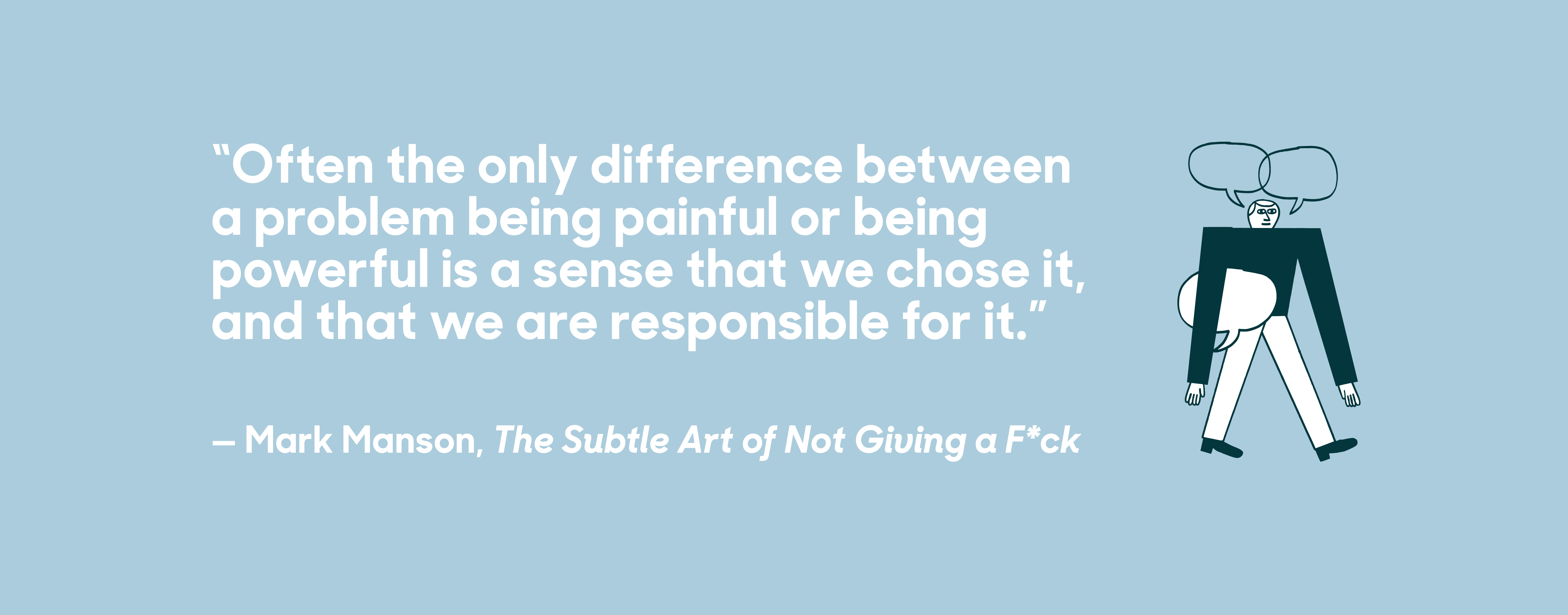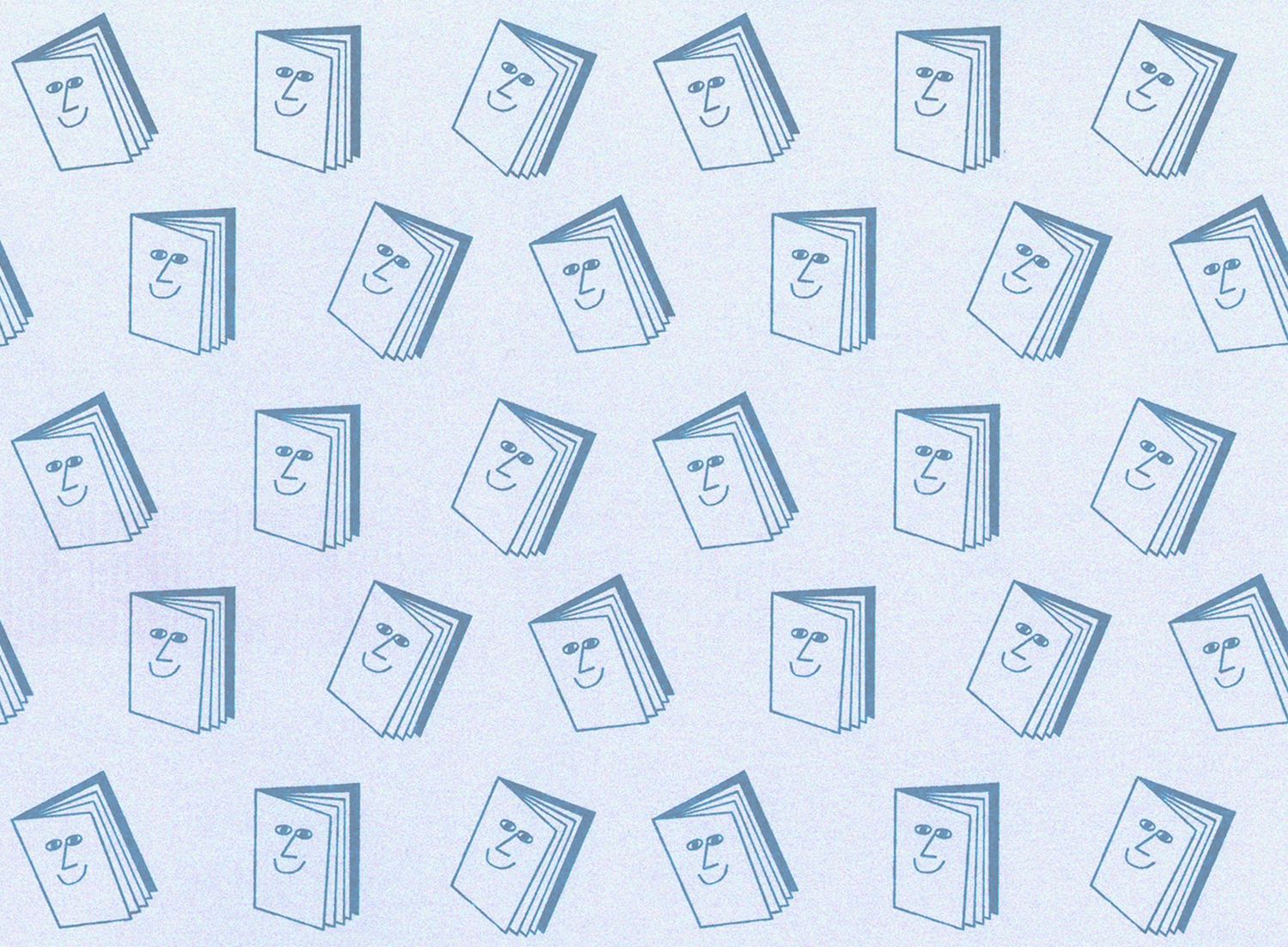Editor’s note: So much great business advice, so little time to read. That’s why each month we’re reading a business book or bestseller so that you don’t have to. We’ll give you the gist, you’ll take away a few key points and, if inspired, you can rush to your local bookseller.
Most self-help books are all about the quick fix and feel-good high. Not this one. If you’re looking to fix your life and achieve rainbows and unicorns perfection, The Subtle Art of Not Giving a F*ck: A Counterintuitive Approach to Living a Good Life by Mark Manson isn’t the book for you. What is it then? A punch-in-the-gut reality check.
Readers beware: with its bright orange cover and profanity in its title, it’s no wonder that the inside of the book isn’t entirely decorous—poop jokes and profane language abound. Manson uses research and personal anecdotes, including some controversial ones, to share the lessons he’s learned about embracing difficulties in life rather than sugar-coating them with positivity.
As someone who rarely reads self-help books, and even more rarely enjoys them, the stark honesty in this book was both striking and refreshing. Manson delivers the message that life will serve you a lot of “shit sandwiches” along your journey and it’s your choice whether you eat them. In other words or, in his words, you have a finite amount of “fucks to give” in life, so you’ve got to choose wisely where, what, or on whom, you spend them.
You will never not have problems
You will always have problems—but Manson argues that once you’ve accepted that truth, you can begin to curate your problems. When you choose problems that you enjoy solving, they become better problems to have.
Part of choosing your problems means knowing what you “give a fuck” about. This helps weed out problems that arise from things that you don’t really care about, giving you power and some amount of choice over the challenges you take on.

The responsibility is yours
Manson writes: “The more we choose to accept responsibility in our lives, the more power we will exercise over our lives. Accepting responsibility for our problems is thus the first step to solving them.” Choosing your problems might sound a little too perfect, because we’re not in control of everything that happens to us, which Manson admits. But you have power in your response: Will you claim fault or, if it’s not your fault, will you accept the responsibility to work on the problem?
But you have power in your response: Will you claim fault or, if it’s not your fault, will you accept the responsibility to work on the problem?
For example: you have a coworker who continually misses deadlines or doesn’t show up for meetings. You can be mad and let that emotion eat away at your energy. Or, you can take responsibility for the problem and find a solution. You might set deadlines a few days early so when your coworker misses them, it doesn’t affect the rest of the team. Or for meetings, give that coworker a 5-minute warning beforehand, providing them the opportunity to respond or acknowledge the meeting’s existence. By taking responsibility, you’re choosing how you respond instead of simply reacting.
Happiness through struggle
Manson never claims to have invented the lessons he’s teaching, so if you’re scratching your head thinking this all sounds very Buddhist, you’re right.
While most self-help books focus on ridding yourself of struggle and pain to find happiness, Manson suggests that pain and struggle are part of the process. He brings in the work of Polish psychologist Kazimierz Dąbrowski, who studied Holocaust survivors. He found that most of them, having endured loss, captivity, starvation, hard labor, and constant fear of death, felt lucky to have survived. Having come through the other side, they were not doomed to unhappiness. Their pain became part of their journey.
“The desire for a more positive experience is itself a negative experience. And, paradoxically, the acceptance of one’s negative experience is itself a positive experience,” Manson writes.
Manson’s “Law of Avoidance”
Here’s another truth from Manson: “The more something threatens your identity, the more you’ll avoid it.” Whoa. This little nugget hit me hard. When it comes to my work, I consider myself to be responsive and someone who generally knows the answer to a question. When I don’t know how to respond, here comes the avoidance: ignored texts, emails, or phone calls. Thanks to Manson, at least I know I’m not alone.
Another mini-lesson I’m slowly trying to implement into my life is the “do something” principle, triggered by those feelings of avoidance. Got a project you don’t want to tackle? For me, that’s usually fear talking. So, I do something towards accomplishing that task, even if it’s not the right thing.
One of my favorite family quotations from my grandmother is this: “Go do something, even if it’s wrong.” She would say it to her children when they were getting under her feet, but I’ve found it applies to life in so many ways.
Right in line with the “do something” principle is this from Manson: “Action isn’t just the effect of motivation; it’s also the cause of it.” I’ve pondered this quotation on many a day where I’m struggling to “get motivated” to write or work. Often, the hardest part is getting started. Once you take that first step, momentum from your action carries you forward to the next thing.
Often, the hardest part is getting started. Once you take that first step, momentum from your action carries you forward to the next thing.
Why should you read this book? You want to turn your expectations of self-help upside down:
Think positive? Fuck positivity.
Be special? Life is full of winners and losers.
Seek happiness? Only if you recognize that the path to happiness is full of piles of shit.
What will it give you? A slap-in-your-face dose of reality. This book is an antidote to the overwhelming stress of busy lives. Between work, home, family, and keeping up the proliferation of “must-read” content, life is just too much sometimes. We need to hone in on what’s really important to each of us, focus energy there, and let the rest go. This book gives you the tools to do just that.
Who should read it? This book is admittedly not for everyone, but is helpful for people who spend more time than they’d like worried about how they’re perceived by peers. And if you’re looking for a little help and generally can’t stomach a self-help book, it might just be the right book for you.
Success and failure are behind the same door
There cannot be success without the risk of failure. According to Manson, this is the failure/success paradox. This is also a tenet of Buddhist faith. Life is a balance of opposites. Without the negative, there cannot be the positive. So we must learn to accept and respond to the negative on our way to the positive.
My favorite story from the book is about Picasso. While sitting in a cafe, Picasso sketched an idea on his napkin. As he got up, he crumpled the napkin to throw it away. A woman at another table recognized the famous artist and exclaimed: “I’ll buy it from you! How much?”
Can you see where this is going?
Picasso said, “Ok, I’ll sell it. That will be $20,000.” The woman, taken aback, counters, “But, it took you only two minutes to make.” Picasso shoves the napkin into his pocket and responds: “No, it took me over 60 years to draw it.”
Manson’s intention with this story is to show that the magnitude of your success is based on the number of times you’ve failed. You cannot improve without failure. For me it was also a reminder that when we question our abilities or value, it’s worth remembering that everything you’ve done in your life has taught you what you know up until now. So don’t sell yourself short. Your two minutes of time or input might not be worth $20,000 yet, but it’s worth something.
Ultimately, Manson’s claim is that what you spend your time and energy on adds up to your experience of life. It might be a different version of “don’t sweat the small stuff”—but you decide what’s big and what’s small and what to let go of. And chances are, whatever you think of this book or of Manson’s personal anecdotes, he probably, definitely doesn’t give f*ck.
